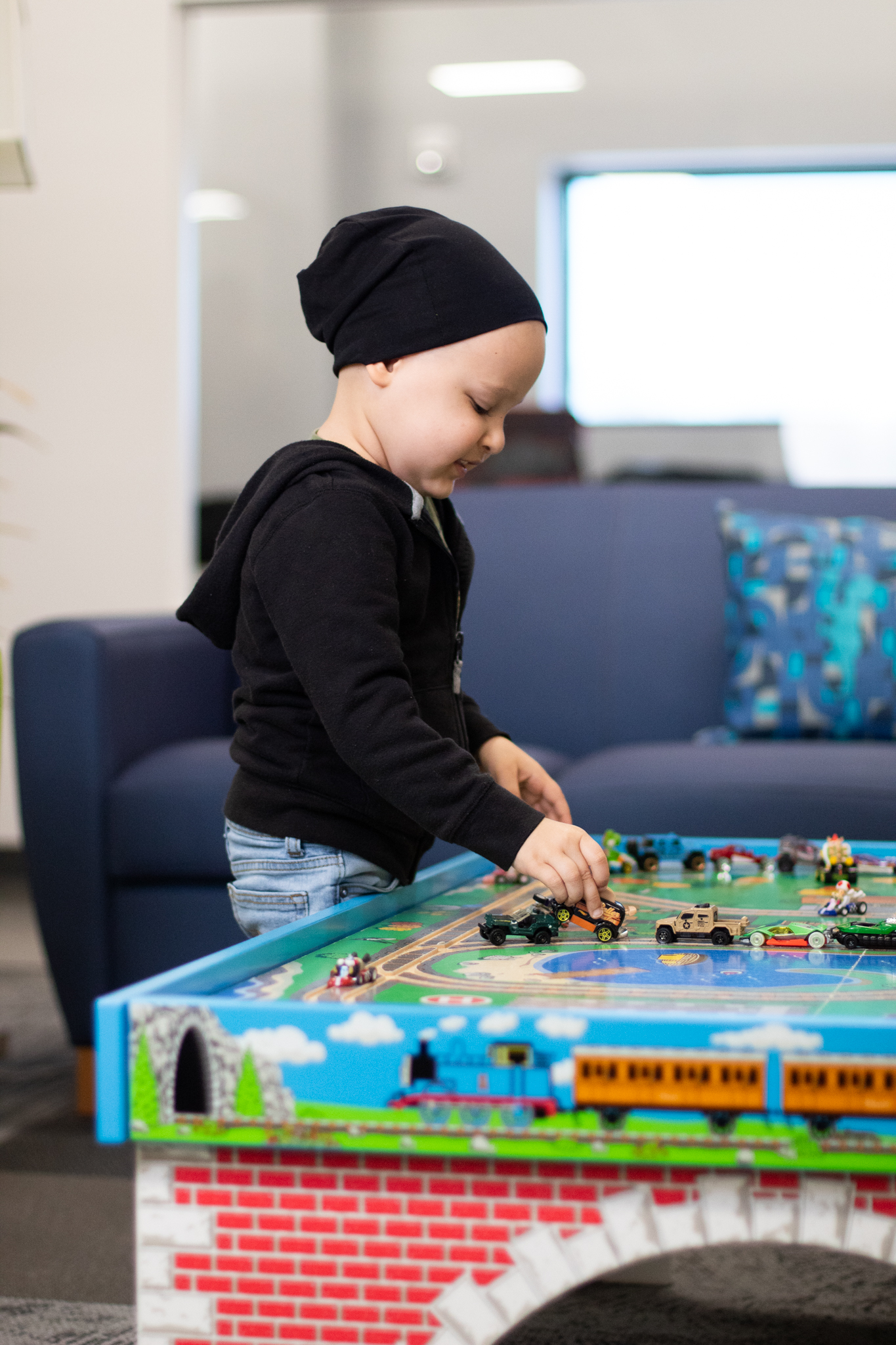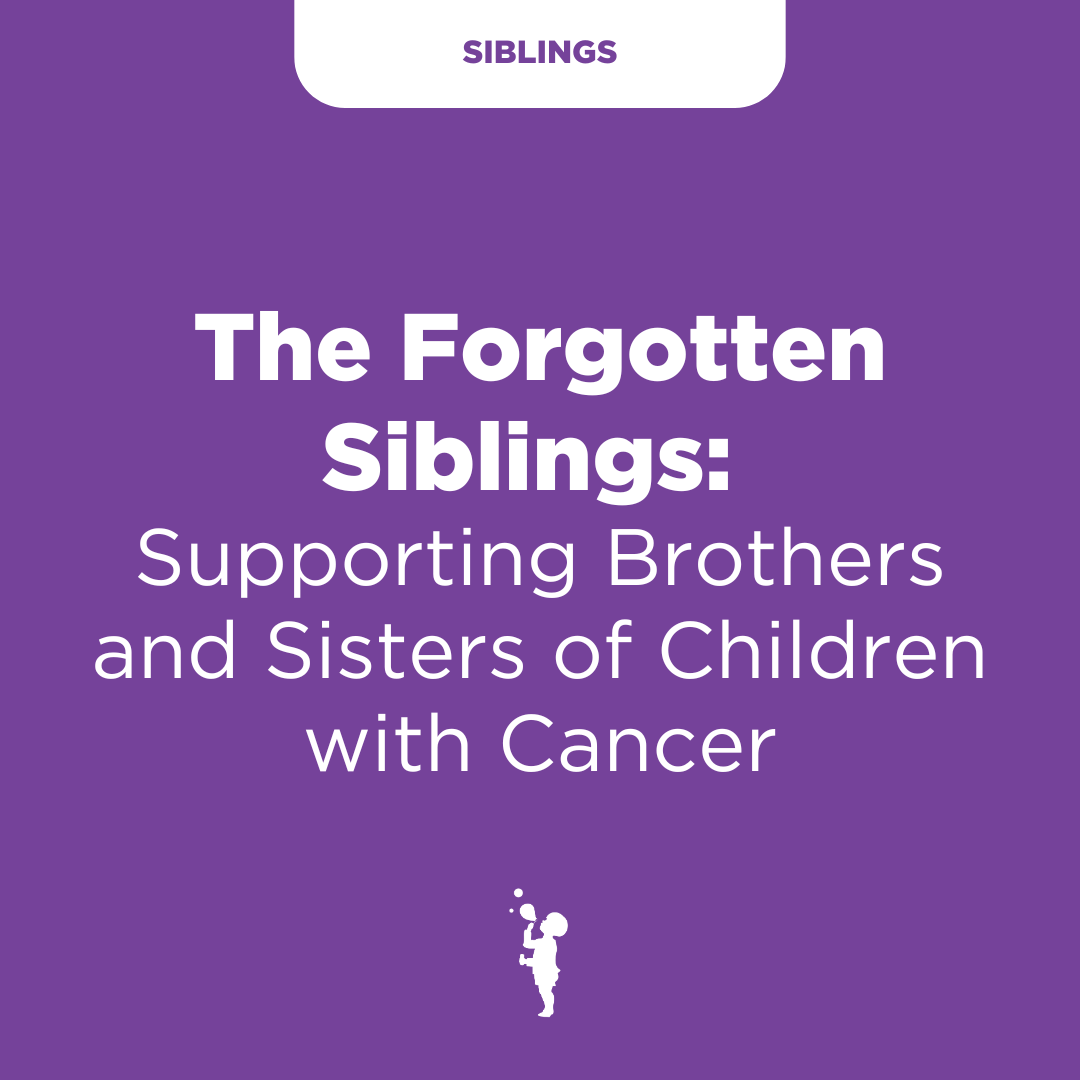Coping with Hair Loss
One of the common side effects of chemotherapy and radiation therapy is hair loss.
One of the common side effects of chemotherapy and radiation therapy is hair loss. Each child is different and unique. Some kids may experience hair loss and some may not. If losing hair bothers your child, here are some of the things you can do to help them with their confidence:

1. Give Options and Encourage Independence:
Always give the child options and let them make independent choices to improve their quality of life. Whether it’s choosing a hat, scarf, or deciding to go without any head covering, allowing them to decide can empower them and give them a sense of control during a challenging time. (More info on this below!)
2. Embrace Creativity:
Encourage your child to express themselves creatively. This can be through decorating hats or scarves with their favorite colors and designs, or even painting their scalp with fun, non-toxic face paints. Creativity can be a wonderful outlet and can help boost their confidence.
3. Normalize the Experience:
Share stories and pictures of other children or even superheroes who have experienced hair loss. Knowing they are not alone and that others have faced similar challenges can be incredibly comforting. There are many books and online resources that can help with this.
4. Seek Professional Support:
If your child is struggling with their self-esteem, consider speaking to a counselor or psychologist who specializes in pediatric oncology. The Austin Hatcher Foundation for Pediatric Cancer offers a range of 100%-FREE support services, including mental and behavioral health therapy, which can be invaluable during this time. They provide strategies and support tailored to your child’s needs, helping them cope with the emotional and psychological aspects of hair loss.
5. Haircuts and Wigs:
Some children may feel more comfortable if they cut their hair short before it starts to fall out, as it can be less traumatic. Additionally, wigs can be a fun option. Many organizations provide free wigs to children undergoing cancer treatment. Letting your child choose their own wig style can be an exciting experience.
6. Comfort and Care:
Make sure to provide your child with gentle hair and scalp care. Use mild shampoos and conditioners and be gentle when washing or brushing their hair. Moisturizing the scalp can also help with any dryness or irritation caused by treatment.
7. Open Communication:
Keep the lines of communication open. Let your child express their feelings about hair loss and listen to their concerns without judgment. Reassure them that it’s okay to feel sad or upset and that it’s a normal part of the process.
8. Focus on the Positive:
Remind your child that their worth is not defined by their hair. Celebrate their strengths, talents, and the things that make them special. Help them find activities and hobbies that they enjoy and that boost their self-esteem.
Remember, the most important thing is to be supportive and understanding. Each child's reaction to hair loss will be different, and what works for one child may not work for another. By being there for your child, offering love and support, and helping them navigate this experience with confidence and resilience, you can make a significant difference in their journey.
Stories that can help prepare for children losing their hair:

Guide to Head Coverings
- Synthetic wig: Needs less care, easy styling and managing, less costly
- Wigs can often be partially or fully covered by an individual's health insurance. For prescription and approval purposes ask for a "Cranial Prosthesis"
- Hat or Head Scarves
- Cotton fabric scarves/hats tends to stay on a smooth scalp
- Protects from heat, cold and sun.
About the Austin Hatcher Foundation for Pediatric Cancer
The Austin Hatcher Foundation for Pediatric Cancer is a nonprofit organization dedicated to providing a lifetime of free essential services to children and families affected by pediatric cancer. Through its various programs, the Foundation offers support, education, and hope to children battling cancer and their families, helping them navigate the challenges of diagnosis, treatment, and survivorship. For more information about the organization, visit www.HatcherFoundation.org.
Resources:
American Cancer Society. (n.d.). Cancer.org. Hair Loss (Alopecia)
Syed, M. B. (2020, October 16). Children’s books about hair loss. Raising World Children. Children's Books about Hair Loss



.png)


.png)